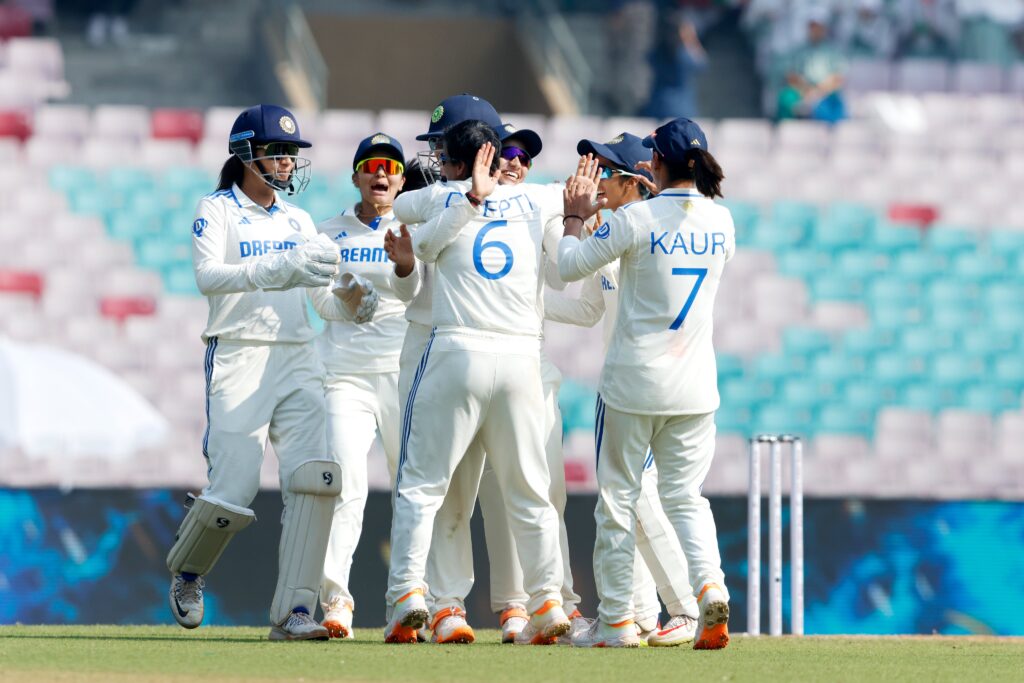
It was March 2020 and the India’s women had made the final of the World T20 in Australia against all odds. It was the second final for the side in three years after Mithali Raj had led the team to the final of the 50-over World Cup in England in 2017. With 86,000 fans at the MCG, the occasion was a real spectacle. While the Australians dominated the match with Alyssa Healy playing a blinder, and won yet another world title, every Indian fan was left with hope that big things were round the corner for the team. With a prodigious talent in Shafali Verma at the top of the order, joining hands with the hugely talented Smriti Mandhana, India were ready to push England and Australia and force their way into the big league.
Jemimah Rodrigues was always touted a young prodigy, and with Harmanpreet Kaur playing some of the best innings the sport had seen, that hope was not unfounded. Add Deepti Sharma to the mix and the batting looked no less than that of any other top team. And yet, the hope hasn’t been fulfilled. Consistently inconsistent, the Indian graph has seen a downward curve the last few years, and some wins against minor teams in the Asian Games notwithstanding, performance was surely the cause.
All of this up until Saturday. Playing England in a one-off Test match, India showed what the team was capable of. Some very good batting to set things up, with India scoring 400-plus on day one even when none of the batters scored a hundred. Multiple fifties from the top order, and serious contributions from the middle and lower order – that’s where the match was set up. England, facing the daunting challenge of trying to get close to a target of 479, were always struggling. With Renuka Thakur giving India the early look in and Pooja Vastrakar doing some real damage, it was left to Deepti Sharma to take control from the middle of England’s innings. With nine wickets in the match to go with her 67, Deepti starred in a historic home Test win for India.
While we celebrate the win, and justly so, we need to be careful not to go overboard. Famous wins have been aberrations in the recent past, and not the norm. A win hasn’t been followed up with anything significant and, as a result, India haven’t won an ICC trophy or a key bilateral series against England or Australia. Also, Test cricket is still a rarity for the women, and India need to start winning bilateral white-ball series to stake a claim as one of the best teams in the world.
Deepti Sharma showcased a sensational all-round performance as India W vanquished England W on a historic occasion.
Let’s celebrate the all-rounder’s outstanding performance, delving into her inspirational journey.@Wowmomo4u @BoriaMajumdar @Deepti_Sharma06 #DeeptiSharma pic.twitter.com/XNK5FlGnLW
— RevSportz (@RevSportz) December 16, 2023
It is one thing to be satisfied beating teams like Bangladesh or Pakistan in the Asian Games and celebrating a historic medal, and a completely different matter to beat Australia and England in multiple formats and do so consistently. Winning against Bangladesh and Pakistan can’t be the index of success. Not anymore. And that’s where India is stuck at the moment.
While the game has moved on administratively and commercially with the start of the Women’s Premier League (WPL), which has serious corporate support, performances have not risen satisfactorily. And that’s where the problem stems from. The men’s game became what it did on the back of two of Indian cricket’s greatest triumphs. The 1983 World Cup win transformed the sport into a national obsession of sorts and within a decade, corporate investment in men’s cricket had become the norm.
Thereafter, the T20 World Cup win in 2007 meant the IPL would take off, and how. Sport often goes hand in hand with nationalism, and those victories managed to unify fans behind the sport. The 2013 Champions Trophy win added to it, and the men’s game did not have to look back. Now, with no ICC trophy win for over a decade, things do need to get better. For, you can’t just be a financial superpower and not win global trophies.
Also Read: India Women’s Stellar Win against England Aside, Future of Tests Remains Bleak
For the women’s game, however, a major series win against Australia (as the men did in Test series in 2018 or 2021) or an ICC trophy win is a dire need. While the Test win is a big step forward, to lose bilateral white-ball contests at home against England or Australia should not be acceptable anymore. To be bowled out for 80 against England on the night of the WPL auction was a real let-down for the fans. That’s how the sport loses momentum, and that’s what we need to guard against.
A statistical comparison with Australia’s batters helps illustrate the point. While there are five Australian players (Meg Lanning has now retired) with T20I averages over 40 in the last two years, no Indian has an average of over 34. And a lot of the big scores have come against lesser opposition. The Shafali story helps illustrate this better. Her average and strike rate have plummeted between 2020-2023. While she batted with a strike rate of 149.71 in 2020, it has now come down to a very modest 113. Her average too has come down. From 26.5 in 2020, it is now 20 in 2023.
In the T20 World Cup in South Africa in February 2023, Shafali scored 102 in five innings, and on India’s tour of Bangladesh, she managed 30 in three innings. Against England at home, she scored 58 in three knocks. She hasn’t done any better in 50-over cricket either. Shafali only turns 20 in January, so time is on her side as she seeks to turn her fortunes around.
The point then is simple – the game, on the field, needs to follow the Test-match template in 2024. While things have gotten better off the field with the WPL, more on-field successes like the Test win against England are essential to sustain the momentum. With Amol Mazumdar in charge, his primary responsibility going into 2024 will be to start winning consistently against the bigger teams. The Test win, historic as it was, could be the perfect start.
For All Sports News: Click Here




